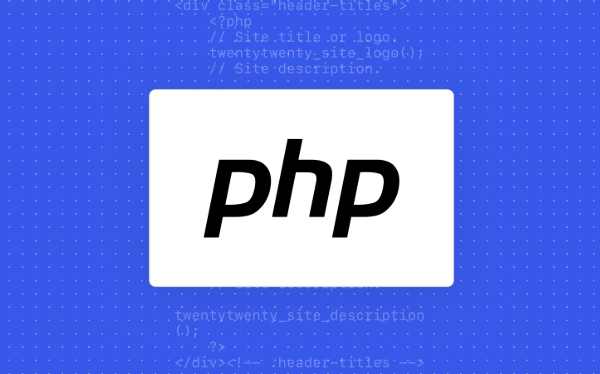Mastering PHP-FPM and Nginx: A High-Performance Setup Guide
Jul 25, 2025 am 05:48 AMNginx handles static files and routes dynamic requests to PHP-FPM, which processes PHP scripts via FastCGI; 2. Optimize PHP-FPM by using Unix sockets, setting pm=dynamic with appropriate max_children, spare servers, and max_requests to balance performance and memory; 3. Configure Nginx with efficient location blocks, correct fastcgi_pass pointing to the socket, and proper SCRIPT_FILENAME to prevent errors; 4. Enable OpCache for PHP script caching, monitor FPM status via /fpm-status, and log slow requests exceeding 5 seconds to identify bottlenecks; 5. Secure the setup by running PHP-FPM as www-data, denying PHP execution in upload directories, and setting correct file permissions with 644 for files and 755 for directories—all essential for a fast, secure, and scalable PHP environment.

Setting up PHP-FPM with Nginx for high performance isn’t complicated, but it does require attention to configuration details that many tutorials skip. Done right, this combo delivers fast, scalable PHP applications with efficient resource use. Here’s how to get it right.

1. Understanding the Roles: Nginx PHP-FPM
Nginx is a lightweight, high-performance web server that handles static files and routes dynamic requests. PHP-FPM (FastCGI Process Manager) runs PHP scripts and communicates with Nginx via the FastCGI protocol.
- Nginx → Serves static assets (CSS, JS, images) directly
-
PHP-FPM → Processes
.phpfiles and returns output to Nginx
This separation allows each service to do what it does best: Nginx handles concurrency efficiently, and PHP-FPM manages PHP execution with process control.

2. Optimizing PHP-FPM Configuration
The main configuration file is usually at /etc/php/{version}/fpm/pool.d/www.conf (path varies by OS and PHP version).
Key settings to tweak:

; Use Unix socket for speed (instead of TCP) listen = /run/php/php8.1-fpm.sock ; Set proper permissions listen.owner = www-data listen.group = www-data listen.mode = 0660 ; Process management pm = dynamic pm.max_children = 50 pm.start_servers = 5 pm.min_spare_servers = 5 pm.max_spare_servers = 35 pm.max_requests = 500
What these mean:
pm = dynamic: Spawns child processes based on demand.max_children: Maximum number of PHP processes. Too high → memory exhaustion; too low → queued requests.max_requests: Restarts workers after 500 requests to prevent memory leaks.listen via socket: Faster than127.0.0.1:9000because it avoids network stack overhead.
? Rule of thumb: Estimate
max_childrenbased on available RAM. If each PHP process uses ~30MB, and you have 1.5GB reserved:1500 / 30 = 50.
3. Nginx Configuration for Fast PHP Handling
In your Nginx server block (e.g., /etc/nginx/sites-available/example.com):
server {
listen 80;
server_name example.com;
root /var/www/html;
index index.php index.html;
location / {
try_files $uri $uri/ /index.php?$query_string;
}
location ~ \.php$ {
include snippets/fastcgi-php.conf;
fastcgi_pass unix:/run/php/php8.1-fpm.sock;
fastcgi_param SCRIPT_FILENAME $document_root$fastcgi_script_name;
include fastcgi_params;
}
location ~ /\.ht {
deny all;
}
}Critical optimizations:
- Use
try_filesto avoid unnecessary PHP execution for static files. - Match the
fastcgi_passsocket path to your PHP-FPMlistendirective. - Avoid
@rewriteor complex rewrites—keep routing simple and fast.
? Pro tip: If you're using Laravel, WordPress, or similar, adjust
SCRIPT_FILENAMEcarefully. A typo here causes blank pages or "File not found" errors.
4. Performance Tuning & Monitoring
Enable OpCache (in php.ini)
opcache.enable=1 opcache.memory_consumption=128 opcache.max_accelerated_files=4000 opcache.validate_timestamps=0 ; Disable in production opcache.fast_shutdown=1
This caches compiled PHP scripts—massive performance gain.
Monitor PHP-FPM Status
Enable the status page in www.conf:
pm.status_path = /fpm-status
Then access it via Nginx:
location ~ ^/fpm-status$ {
allow 127.0.0.1;
deny all;
fastcgi_pass unix:/run/php/php8.1-fpm.sock;
include fastcgi_params;
fastcgi_param SCRIPT_FILENAME $document_root$fastcgi_script_name;
}Visit http://yoursite.com/fpm-status to see active processes, requests, and idle time.
Log Slow Requests
Find bottlenecks by logging slow scripts:
slowlog = /var/log/php-fpm/slow.log request_slowlog_timeout = 5
Any script taking over 5 seconds gets logged with a full backtrace.
5. Security & Permissions
- Run PHP-FPM under a dedicated user (e.g.,
www-data), not root. - Restrict uploads and disable execution in upload directories:
location /uploads/ { location ~ \.php$ { deny all; } } - Set proper file ownership:
chown -R www-data:www-data /var/www/html find /var/www/html -type f -exec chmod 644 {} \; find /var/www/html -type d -exec chmod 755 {} \;
Basically, a high-performance PHP setup with Nginx and PHP-FPM comes down to smart process management, using Unix sockets, enabling OpCache, and writing clean Nginx configs. It’s not magic—just careful tuning.
The above is the detailed content of Mastering PHP-FPM and Nginx: A High-Performance Setup Guide. For more information, please follow other related articles on the PHP Chinese website!

Hot AI Tools

Undress AI Tool
Undress images for free

Undresser.AI Undress
AI-powered app for creating realistic nude photos

AI Clothes Remover
Online AI tool for removing clothes from photos.

Clothoff.io
AI clothes remover

Video Face Swap
Swap faces in any video effortlessly with our completely free AI face swap tool!

Hot Article

Hot Tools

Notepad++7.3.1
Easy-to-use and free code editor

SublimeText3 Chinese version
Chinese version, very easy to use

Zend Studio 13.0.1
Powerful PHP integrated development environment

Dreamweaver CS6
Visual web development tools

SublimeText3 Mac version
God-level code editing software (SublimeText3)

Hot Topics
 Mastering PHP-FPM and Nginx: A High-Performance Setup Guide
Jul 25, 2025 am 05:48 AM
Mastering PHP-FPM and Nginx: A High-Performance Setup Guide
Jul 25, 2025 am 05:48 AM
NginxhandlesstaticfilesandroutesdynamicrequeststoPHP-FPM,whichprocessesPHPscriptsviaFastCGI;2.OptimizePHP-FPMbyusingUnixsockets,settingpm=dynamicwithappropriatemax_children,spareservers,andmax_requeststobalanceperformanceandmemory;3.ConfigureNginxwit
 Setting Up PHP on macOS
Jul 17, 2025 am 04:15 AM
Setting Up PHP on macOS
Jul 17, 2025 am 04:15 AM
It is recommended to use Homebrew to install PHP, run /bin/bash-c"$(curl-fsSLhttps://raw.githubusercontent.com/Homebrew/install/HEAD/install.sh)" to install Homebrew, and then execute brewinstallphp or a specified version such as brewinstallphp@8.1; after installation, edit the php.ini file in the corresponding path to adjust memory_limit, upload_max_filesize, post_max_size and display_
 Harnessing the Power of WSL 2 for a Linux-Native PHP Development Workflow
Jul 26, 2025 am 09:40 AM
Harnessing the Power of WSL 2 for a Linux-Native PHP Development Workflow
Jul 26, 2025 am 09:40 AM
WSL2isthenewstandardforseriousPHPdevelopmentonWindows.1.InstallWSL2withUbuntuusingwsl--install,thenupdatewithsudoaptupdate&&sudoaptupgrade-y,keepingprojectsintheLinuxfilesystemforoptimalperformance.2.InstallPHP8.3andComposerviaOnd?ejSury’sPPA
 Demystifying PHP Compilation: Building a Custom PHP from Source for Optimal Performance
Jul 25, 2025 am 06:59 AM
Demystifying PHP Compilation: Building a Custom PHP from Source for Optimal Performance
Jul 25, 2025 am 06:59 AM
CompilingPHPfromsourceisnotnecessaryformostprojectsbutprovidesfullcontrolforpeakperformance,minimalbloat,andspecificoptimizations.2.ItinvolvesconvertingPHP’sCsourcecodeintoexecutables,allowingcustomizationlikestrippingunusedextensions,enablingCPU-spe
 Deploying a Scalable PHP Environment on AWS EC2 from Scratch
Jul 26, 2025 am 09:52 AM
Deploying a Scalable PHP Environment on AWS EC2 from Scratch
Jul 26, 2025 am 09:52 AM
LaunchanEC2instancewithAmazonLinux,appropriateinstancetype,securesecuritygroup,andkeypair.2.InstallLAMPstackbyupdatingpackages,installingApache,MariaDB,PHP,startingservices,securingMySQL,andtestingPHP.3.DecouplecomponentsbymovingdatabasetoRDS,storing
 Unlocking Peak PHP Performance: Configuring OPcache and JIT Compilation
Jul 24, 2025 pm 09:58 PM
Unlocking Peak PHP Performance: Configuring OPcache and JIT Compilation
Jul 24, 2025 pm 09:58 PM
OPcache and JIT are the core tools for PHP8.0 performance optimization. Correct configuration can significantly improve execution efficiency; 1. Enable OPcache and set opcache.enable=1, opcache.memory_consumption=192, opcache.max_accelerated_files=20000, opcache.validate_timestamps=0 to implement opcode caching and reduce parsing overhead; 2. Configure JIT to enable tracking JIT through opcache.jit_buffer_size=256M and opcache.jit=1254
 Automating Your PHP Environment Setup: Integrating PHP into a CI/CD Pipeline
Jul 26, 2025 am 09:53 AM
Automating Your PHP Environment Setup: Integrating PHP into a CI/CD Pipeline
Jul 26, 2025 am 09:53 AM
ChooseaCI/CDplatformlikeGitHubActionsorGitLabCIfortightversioncontrolintegrationandminimalinfrastructure;2.DefineaconsistentPHPenvironmentusingcontainerizationwithimageslikephp:8.2-cliorcomposer:latestandinstalldependenciesviacomposerinstall--no-inte
 Troubleshooting Common PHP Installation Pitfalls: A Diagnostic Checklist
Jul 26, 2025 am 09:50 AM
Troubleshooting Common PHP Installation Pitfalls: A Diagnostic Checklist
Jul 26, 2025 am 09:50 AM
VerifysystemrequirementsanddependenciesbyconfirmingOScompatibilityandinstallingessentiallibrariesandbuildtools,usingpackagemanagerslikeaptoryumtosimplifydependencymanagement.2.CheckPHPconfigurationandcompilationerrorsbyrunningaminimal./configurecomma






